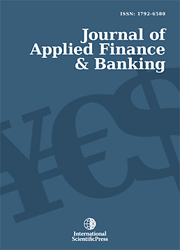Journal of Applied Finance & Banking
The Spatial Spillover Effects of Fiscal Expenditure and Taxation on the Number of Enterprises
-
 [ Download ]
[ Download ]
- Times downloaded: 99
Abstract
This study aims to investigate the impact of fiscal expenditures and tax policies at the county and city level in Taiwan on the number of local business registrations, with particular emphasis on identifying potential spatial spillover effects. To this end, the study compiles panel data covering 22 counties and cities in Taiwan from 2000 to 2023. In terms of spatial dependence, Moranís I index is employed to test the spatial autocorrelation of business activities, and the spatial weight matrix is constructed based on the queen contiguity criterion. Based on the results of the Hausman test and model fit comparison, the Spatial Durbin Model (SDM) with random effects is ultimately selected as the most appropriate model. Empirical findings reveal significant spatial autocorrelation in the distribution of business registrations. Both fiscal expenditure and tax variables exhibit not only direct impacts on local jurisdictions but also significant spatial spillover effects. In particular, expenditures on education, science, and culture show a notable positive influence on business formation in neighboring regions. Conversely, certain tax variables exhibit negative spillovers, suggesting that interjurisdictional policy competition may be present.
JEL classification numbers: C71, H72, R12, C33.
Keywords: Spatial Durbin Model, Fiscal Expenditure, Tax Policy, Business Registration, Spatial Spillover Effect.
